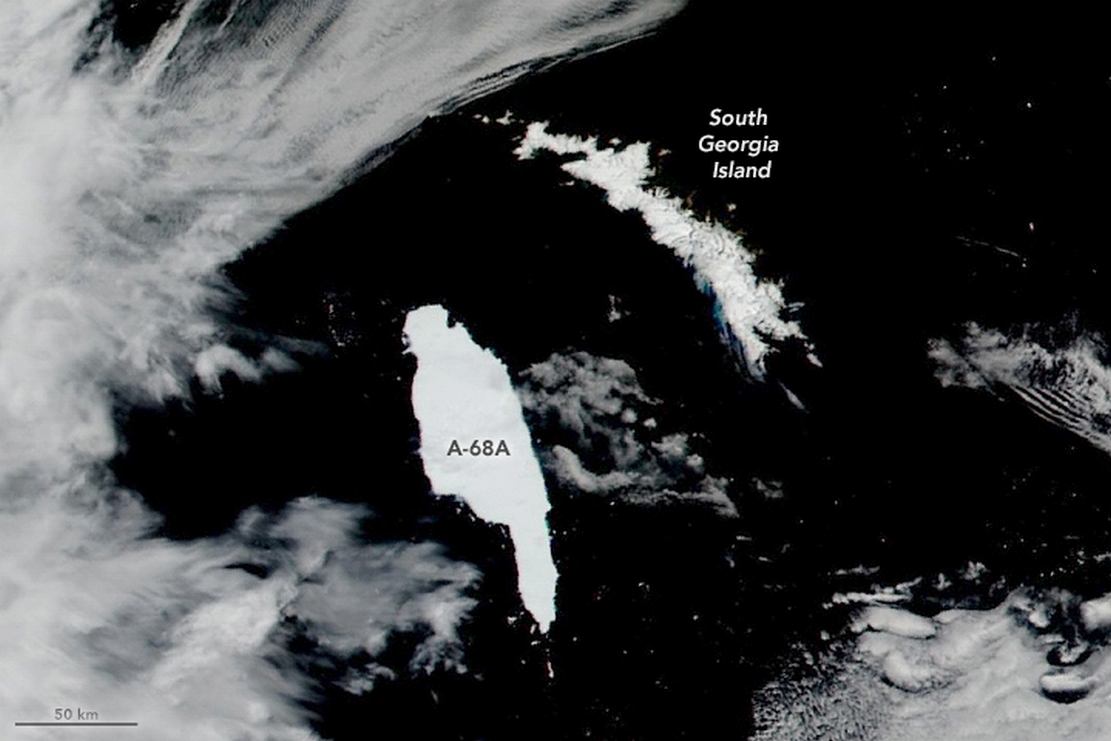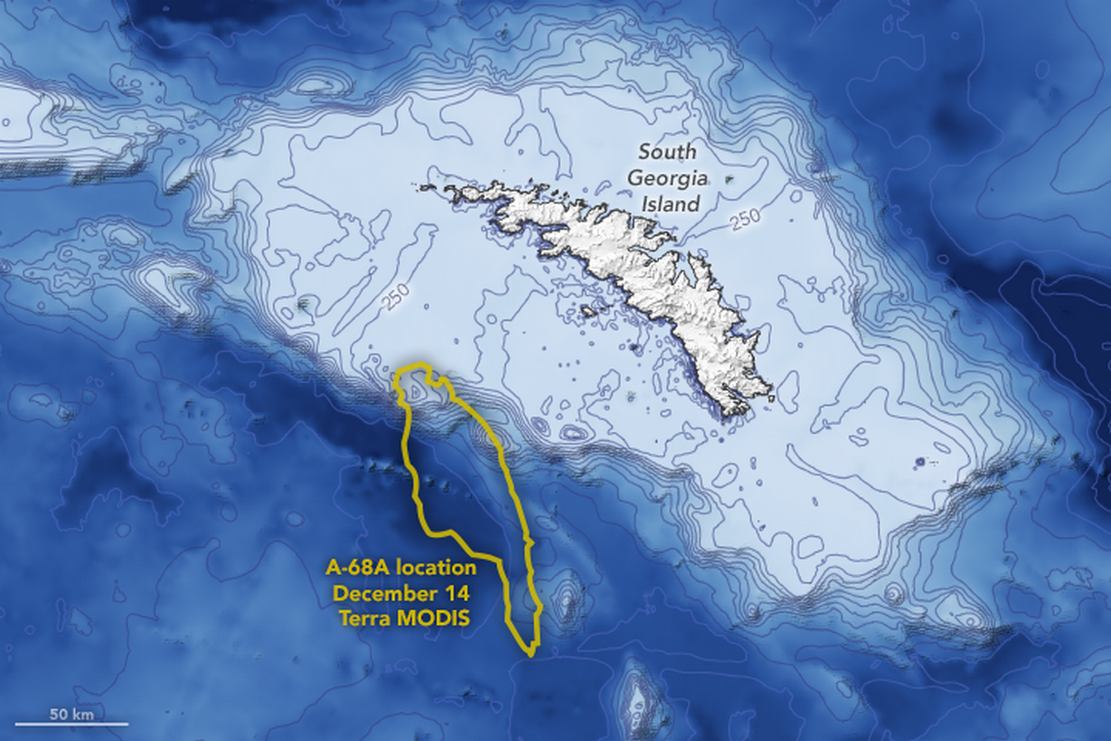Iceberg South Georgia has become a topic of global interest, capturing the imagination of scientists, adventurers, and nature enthusiasts alike. Imagine a massive floating block of ice, larger than many cities, slowly drifting through the Southern Ocean. This isn’t just an ordinary iceberg; it’s a natural wonder that offers insights into climate change, oceanography, and the fragile beauty of our planet. If you’ve ever wondered about these icy giants, you’re in the right place. Let’s dive into the world of Iceberg South Georgia and uncover what makes it so extraordinary.
Picture this: a colossal chunk of ice, breaking off from the Antarctic ice sheet, embarking on a journey across the Southern Ocean. It’s not just about the size or the awe-inspiring visuals; it’s about the story behind it. Iceberg South Georgia is more than just a piece of ice—it’s a symbol of our planet’s changing climate and a reminder of the delicate balance of our ecosystems.
As we explore this topic, we’ll delve into the science behind icebergs, their impact on the environment, and the role they play in global climate patterns. Whether you’re a science enthusiast, an environmentalist, or simply someone curious about the world around you, this article will provide you with everything you need to know about Iceberg South Georgia.
Read also:3 Movierulz Plz Your Ultimate Guide To Streaming Movies Safely And Legally
What is Iceberg South Georgia?
Iceberg South Georgia, or officially known as A68a, is one of the largest icebergs ever recorded. It originated from the Larsen C ice shelf in Antarctica and has been making headlines since its calving in 2017. Imagine an ice block measuring over 5,800 square kilometers—yeah, that’s massive! This iceberg’s journey has been closely monitored by scientists and satellite systems, as it poses potential threats to marine life and ecosystems around South Georgia Island.
Why Should You Care About Iceberg South Georgia?
Iceberg South Georgia isn’t just a random piece of ice floating around. Its existence and movement have significant implications for our planet. Here are a few reasons why you should care:
- Climate Change Indicator: Icebergs like South Georgia are direct indicators of climate change and the melting of polar ice caps.
- Marine Life Impact: The iceberg’s proximity to South Georgia Island raises concerns about its impact on local marine life, including penguins and seals.
- Scientific Research: Studying Iceberg South Georgia provides valuable insights into ocean currents, climate patterns, and the behavior of icebergs.
Understanding the Science Behind Icebergs
Icebergs are more than just floating ice—they’re complex natural structures that play a crucial role in our planet’s ecosystem. Let’s break down the science behind Iceberg South Georgia:
How Do Icebergs Form?
Icebergs form through a process called calving, where large chunks of ice break off from glaciers or ice shelves. In the case of Iceberg South Georgia, it broke away from the Larsen C ice shelf, a region that has been under scrutiny due to its rapid melting. This process is influenced by rising global temperatures and shifting weather patterns.
The Lifecycle of an Iceberg
Once an iceberg forms, it embarks on a journey that can last for years. Iceberg South Georgia, for instance, has traveled thousands of kilometers since its calving. During this journey, it interacts with ocean currents, wind patterns, and even marine life. Eventually, it will melt into the ocean, contributing to rising sea levels.
Iceberg South Georgia and Climate Change
The relationship between icebergs and climate change is undeniable. Iceberg South Georgia serves as a stark reminder of the effects of global warming on polar regions. As temperatures rise, ice shelves become more unstable, leading to more frequent calving events. This not only affects the polar regions but also contributes to rising sea levels worldwide.
Read also:Ellie Nova Movie The Ultimate Guide To Her Cinematic Journey
Impact on Global Sea Levels
When icebergs like South Georgia melt, they add significant amounts of freshwater to the ocean. This can disrupt ocean currents and lead to changes in climate patterns. Scientists estimate that if all the ice in Antarctica were to melt, global sea levels could rise by several meters, displacing millions of people and altering coastlines worldwide.
Monitoring Iceberg South Georgia
Keeping an eye on Iceberg South Georgia is no small feat. Scientists use advanced satellite technology and remote sensing to track its movement and monitor its impact on the environment. Here are some of the tools and techniques used:
- Satellite Imagery: Satellites like NASA’s MODIS and ESA’s Sentinel-1 provide real-time data on the iceberg’s location and size.
- Drifting Buoys: These devices are deployed near the iceberg to collect data on ocean currents and water temperature.
- Research Vessels: Scientists aboard research vessels conduct field studies to gather more detailed information about the iceberg’s composition and behavior.
Environmental Concerns
The presence of Iceberg South Georgia near South Georgia Island raises several environmental concerns. The massive iceberg could block sunlight, affecting marine life that relies on photosynthesis. Additionally, its melting could release large amounts of freshwater into the ocean, altering local ecosystems.
Impact on Marine Life
Marine species around South Georgia Island, such as penguins, seals, and whales, could be affected by the iceberg’s presence. For instance, penguins may face difficulties in finding food if the iceberg obstructs their access to feeding grounds. Scientists are closely monitoring these impacts to better understand the long-term effects on the local ecosystem.
Iceberg South Georgia in Popular Culture
Iceberg South Georgia has captured the public’s imagination, inspiring documentaries, articles, and even social media trends. Its sheer size and the drama surrounding its potential impact on South Georgia Island have made it a fascinating subject for media coverage. Here are a few examples:
- Documentaries: Several documentaries have been produced to showcase the journey of Iceberg South Georgia and its significance.
- Social Media: The iceberg has become a popular topic on platforms like Twitter and Instagram, with users sharing stunning images and updates on its movement.
Future Predictions
What’s next for Iceberg South Georgia? Scientists predict that it will eventually break apart into smaller pieces and melt into the ocean. However, the exact timeline and impact of this process remain uncertain. Continued monitoring and research will be essential in understanding the long-term effects of this iceberg on the environment.
Potential Scenarios
There are several possible scenarios for Iceberg South Georgia’s future:
- Complete Melting: The iceberg could melt entirely, contributing to rising sea levels and altering ocean currents.
- Fragmentation: It may break into smaller pieces, which could pose navigation hazards for ships in the region.
- Environmental Impact: Its melting could have lasting effects on the local ecosystem, affecting marine life and biodiversity.
What Can We Learn from Iceberg South Georgia?
Iceberg South Georgia offers valuable lessons about our planet’s changing climate and the importance of environmental conservation. By studying this iceberg, scientists can gain insights into:
- Climate Patterns: Understanding how icebergs form and move can help predict future climate trends.
- Marine Ecosystems: Analyzing the impact of icebergs on marine life can inform conservation efforts.
- Global Warming: The calving of massive icebergs highlights the urgent need to address climate change.
Conclusion
Iceberg South Georgia is more than just a floating piece of ice—it’s a symbol of our planet’s changing climate and a reminder of the delicate balance of our ecosystems. From its formation to its potential impact on the environment, this iceberg offers valuable insights into the science of icebergs and their role in global climate patterns. As we continue to monitor its journey, let’s remember the importance of taking action to protect our planet.
We encourage you to share your thoughts and questions in the comments below. Have you ever seen an iceberg up close? What do you think about the impact of climate change on polar regions? Let’s keep the conversation going and work together to create a sustainable future for our planet.
Table of Contents
- What is Iceberg South Georgia?
- Why Should You Care About Iceberg South Georgia?
- Understanding the Science Behind Icebergs
- Iceberg South Georgia and Climate Change
- Monitoring Iceberg South Georgia
- Environmental Concerns
- Iceberg South Georgia in Popular Culture
- Future Predictions
- What Can We Learn from Iceberg South Georgia?
- Conclusion


